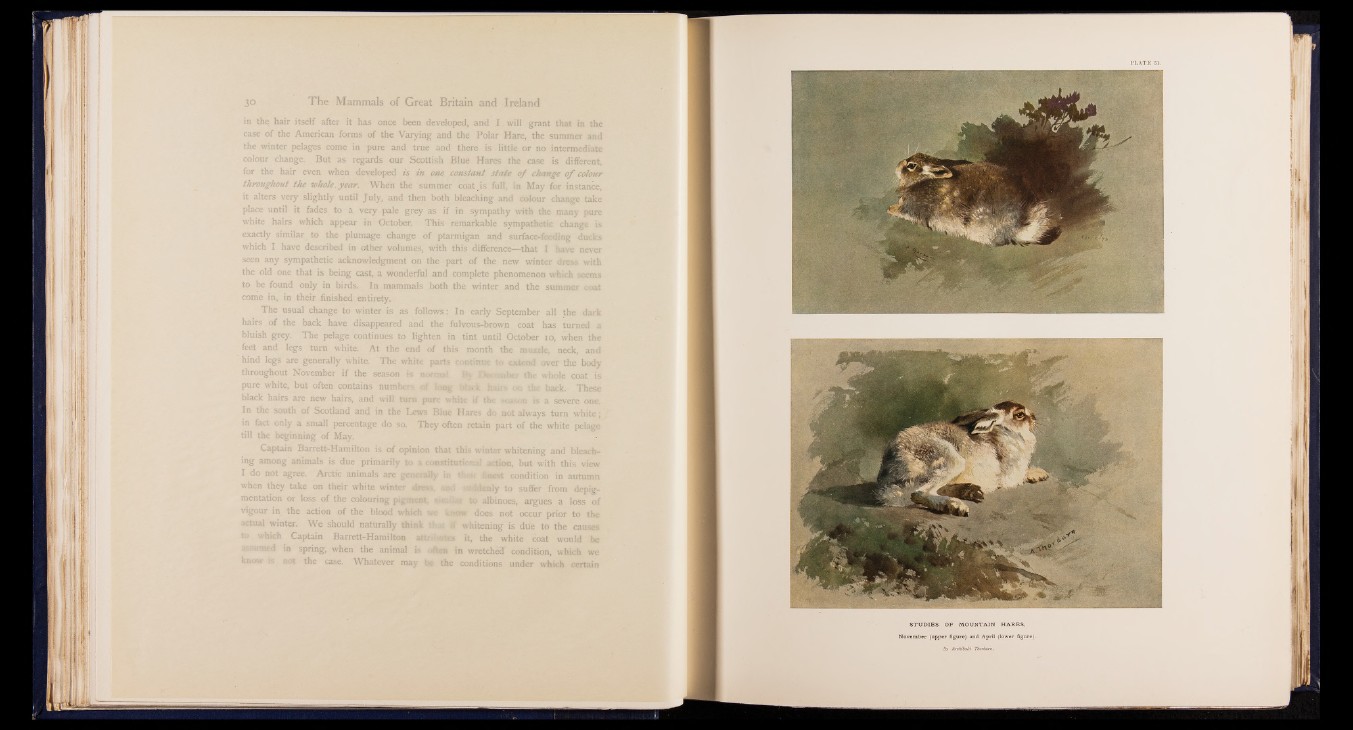
in the hair itself after it has once been developed, and I will grant that in the
case of the American forms of the Varying and the Polar Hare, the summer and
the winter pelages come in pure and true and there is little or no intermediate
colour change. But as regards our Scottish Blue Hares the case is different,
for the hair even when developed is in one constant state o f change o f colour
throughout the whole,year. When the summer coat.is full, in May for instance,
it alters very slightly until July, and then both bleaching and colour change take
place until it fades to a very pale grey as if in sympathy with the many pure
white hairs which appear in October. This remarkable sympathetic change is
exactly similar to the plumage change of ptarmigan and surface-feeding ducks
which I have described in other volumes, with this difference— that I have never
seen any sympathetic acknowledgment on the part of the new winter dress with
the old one that is being cast, a wonderful and complete phenomenon which seems
to be found only in birds. In mammals both the winter and the summer coat
come in, in their finished entirety.
The usual change to winter is as follows: In early September all the dark
hairs of the back have disappeared and the fulvous-brown coat has turned a
bluish grey. The pelage continues to lighten in tint until October io, when the
feet and legs turn white. At the end of this month the muzzle, neck, and
hind legs are generally white. The white parts continue to extend over the body
throughout November if the season is normal By December the whole coat is
pure white, but often contains numbers of loag black halts on the back. These
black hairs are new hairs, and will turn pure white if the season is a severe one.
In the south of Scotland and in the Lews Blue Hares do not always turn white;
in fact only a small percentage do so. They often retain part of the white pelage
till the beginning of May.
Captain Barrctt-Hamilton is of opinion that this winter whitening and bleaching
among animals is due primarily to a constitutional action, but with this view
I do not agree. Arctic animals arc generally in their finest condition in autumn
when they take on their white winter dress, and suddenly to suffer from depigmentation
or loss of the colouring pigment, simd-*r to albinoes, argues a loss of
vigour in the action of the blood which we know does not occur prior to the
actual winter. We should naturally think that if whitening is due to the causes
to which Captain Barrett-Hamilton attribute* it, the white coat would be
assumed in spring, when the animal is <*ften in wretched condition, which we
know is not the case. Whatever may be the conditions under which certain